According to Sustainable Development Goal 4 “Quality Education” inclusive and equitable quality education should be provided for every person. In Europe, it is often taken for granted that people are taught to read. In 2016, the UN defined 86 % of adults (15 years of age and older) as literate, defined as the ability to read and write a simple sentence in a language.
However, it has not always been like this. In ancient times, the ability to read and write was mainly reserved for professional scribes. Before computers, typewriters and even paper, libraries were epicentres of learning for the world’s leading thinkers. A few centuries later, in Europa, texts were primarily written in Latin. Especially after the invention of the printing press in the 15th century, books were also published in national languages, more and more people had access to reading material and the rate of literacy increased.
While in ancient times, public libraries were designed for the intellectual elite and fiercely guarded by librarians, today, in what has been called the ‘information society’, anyone with internet access has the key to a world of knowledge and public libraries are open for everyone. Wonderful libraries are everywhere, each one home to a unique collection of the world’s knowledge and history.
Nevertheless, the following list will provide the top 10 of the most significant libraries of all times:
- Royal Library of Ashurbanipal
- Library of Alexandria
- Villa of the Papyri
- The Library of Celsus
- Imperial Library of Constantinople
- House of Wisdom
- Bodleian Library
- Vatican Library
- British Library
- S. Library of Congress
- Royal Library of Ashurbanipal
The Library of Ashurbanipal is the oldest known library in the world. It was founded in the 7th century B.C. under the Assyrian ruler Ashurbanipal. Before its destruction in 612 A.C., it contained around 30 000 texts and was a treasure trove of Assyrian literary, historical, political and philosophical texts that no longer survive today. Also it contained the 4 000-year-old Epic of Gilgamesh. A large part of the works that have survived to this day are now in the British Museum in London.
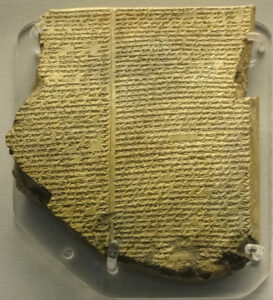
- Library of Alexandria
Constructed in 295 B.C., the vast library included lecture halls, observatories, living quarters, and a zoo, in addition to the thousands of scrolls. After the death of Alexander the Great, the pharaoh Ptolemy I commissioned the Great Library project. At its peak it may have included over 500 000 papyrus scrolls containing works of literature and texts on history, law, mathematics and science. Home to works from Homer, Plato, and Socrates, and utilized by Archimedes and Euclid for their studies, it was a universal library. Also, it is said that the Great Library of Alexandria even had an intricate system of registration and classification.
The great library’s demise is traditionally dated to 48 B.C., when it supposedly burned. But while the blaze may have damaged the library, most historians now believe that it continued to exist in some form for several more centuries.
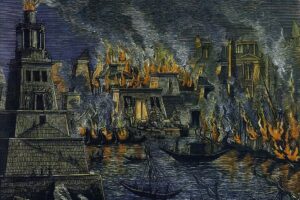
- Villa of the Papyri
The so-called “Villa of the Papyri” is the only library of antiquity whose collection has survived to the present day. Its roughly 1 800 scrolls were located in the Roman city of Herculaneum. When nearby Mount Vesuvius erupted in 79 A.C., the library was buried—and exquisitely preserved—under a 90-foot layer of volcanic material. Its blackened, carbonized scrolls weren’t rediscovered until the 18th century. Much of the catalogue has yet to be deciphered, but studies have already revealed that the library contains several texts by an Epicurean philosopher and poet named Philodemus.
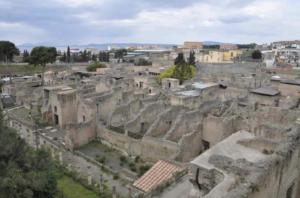
- The Library of Celsus
100 A.C., the son of the Roman consul Tiberius Julius Celsus Polemaeanus completed a memorial library to his father in the city of Ephesus. Like the Great Library at Alexandria, the Celsus, too, was destroyed by fire in the third century A.D. but parts of the front wall survived and were restored in the fourth century. The building’s ornate façade still stands today. The library stored an estimated 12 000 hand-written books. But it most striking feature was no doubt Celsus himself, who was buried inside in an ornamental sarcophagus. Interestingly, the library had its own temperature regulation system: a second set of outer walls to protect the books from humidity and temperature variations.
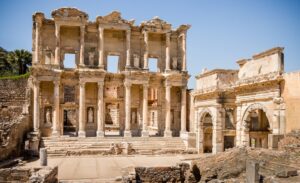
- Imperial Library of Constantinople
The Imperial Library of the ancient city of Constantinople, capital of the Byzantine Empire, was built in the 4th century A.C. under Constantine the Great and was severely damaged in 1204 during the sack of Constantinople after several fires. At its peak, the collection was as large as 120 000 scrolls and codices. Because many of the original Greek papyri began disintegrating over time and to ensure future generations of learners could pick up a few things from the past, its scholars copied large portions of ancient Greek and Roman literature. The texts left a major mark on antiquity’s greatest minds.
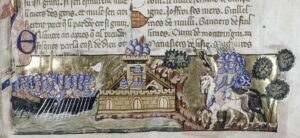
- House of Wisdom
During the Islamic Golden Age, House of Wisdom in what is now Baghdad, served as an epicenter of religious and scientific inquiry, and academics behind the Translation Movement, which converted Greek texts into Arabic, started up here. Established in the 9th century, the library contained manuscripts in Indian, Persian, and Greek.
The Middle East’s top scholars flocked to the House of Wisdom. Their ranks included the mathematician al-Khawarizmi, one of the fathers of algebra, as well as the polymath thinker al-Kindi, often called “the Philosopher of the Arabs.” The House of Wisdom stood as the Islamic world’s intellectual nerve center for several hundred years, but in 1258, the Mongols sacked Baghdad and threw the collection of books into the Tigris River. According to legend, so many books were tossed into the river Tigris that its waters turned black from ink.
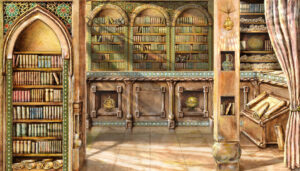
- Bodleian Library
A legend says that King Charles I once asked the chief librarian of the Bodleian Library if he could borrow a book. A few years later, Oliver Cromwell asked the same question. The librarian refused them both – books in the Bodleian could be read on the premises or not at all.
An earlier repository of books and documents at Oxford University was destroyed in the effort to rid England of all traces of Roman Catholicism. However, Oxford University was not a wealthy institution and did not have the resources to build up a collection of newly printed books. In the 17th century Sir Thomas Bodley came forward, providing the cash and even some books to restore the collection.
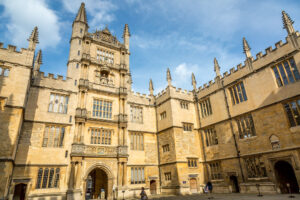
- Vatican Library
The Roman Catholic Church has been collecting documents since the 4th century, although it took until the 15th century to build an official library for them all. The Vatican Library’s holdings boast some rare, essential historical and philosophical texts in multiple languages and eras. Nowadays, the Vatican Library preserves over 180 000 manuscripts (including archival units), 1.6 million printed books, about 9 000 incunabula, over 300 000 coins and medals, more than 150 000 prints, thousands of drawings and engravings and over 200 000 photographs. As example, the library owns the Codex Vaticanus Graecus 1209 – the oldest complete Bible in the world, penned near the year 325. Furthermore, 52 miles of shelving in the Secret Archives hold the complete records of the Church’s activities since 1198. Also, it offers up library science courses, and continues to attract scholars across disciplinary lines.
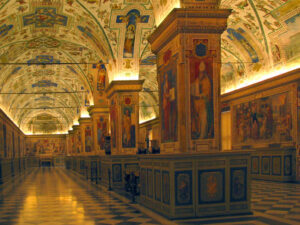
- British Library
With more than 150 million holdings (14 million books, 4 million maps, 1 million musical scores), this prestigious research library — along with the Library of Congress — exists as the biggest in the world; almost more of a museum than anything. Compared to many other significant libraries, the British Library is relatively young having been brought into existence by the 1972 The British Library Act. Each year, it adds six miles worth of material. No wonder greats like George Orwell, Mark Twain, Karl Marx, Charles Dickens and Mahatma Gandhi explored its shelves.
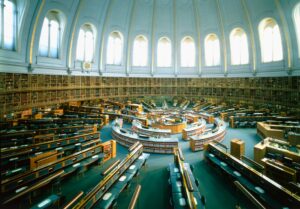
- S. Library of Congress
The Library of Congress serves as America’s preeminent research library and one of its most integral archives preserving national history. The Library of Congress, founded in 1800, is said to be the oldest federal cultural institution in the United States. Today the Library of Congress claims to be the largest library in the world, with nearly 150 million items on approximately 650 miles of bookshelves. The collections include more than 32 million books and other print materials, 3 million recordings, 12.5 million photographs, 5.3 million maps, 5.6 million pieces of sheet music and 62 million manuscripts. That includes Thomas Jefferson’s personal library, every U.S. patent, three centuries worth of newspapers, a perfect vellum Gutenberg Bible, a rough draft of the Declaration of Independence, a few Stradivarius violins, the largest rare book collection in North America and over 100 000 comic book titles. The LOC even archives tweets – by January 2013, it had catalogued 170 billion of them.
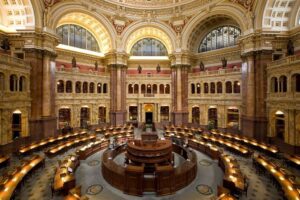
Resources:
https://www.vaticanlibrary.va/en/the-library/history-of-BAV.html
https://unstats.un.org/sdgs/report/2019/goal-04/
https://www.worldatlas.com/ancient-world/most-significant-libraries-of-the-ancient-world.html
https://www.mentalfloss.com/article/54123/what-are-most-important-libraries-world
https://www.history.com/news/8-impressive-ancient-libraries
https://www.cartridgesave.co.uk/news/the-7-most-impressive-libraries-from-throughout-history/
https://oedb.org/ilibrarian/25-libraries-that-changed-the-world/

